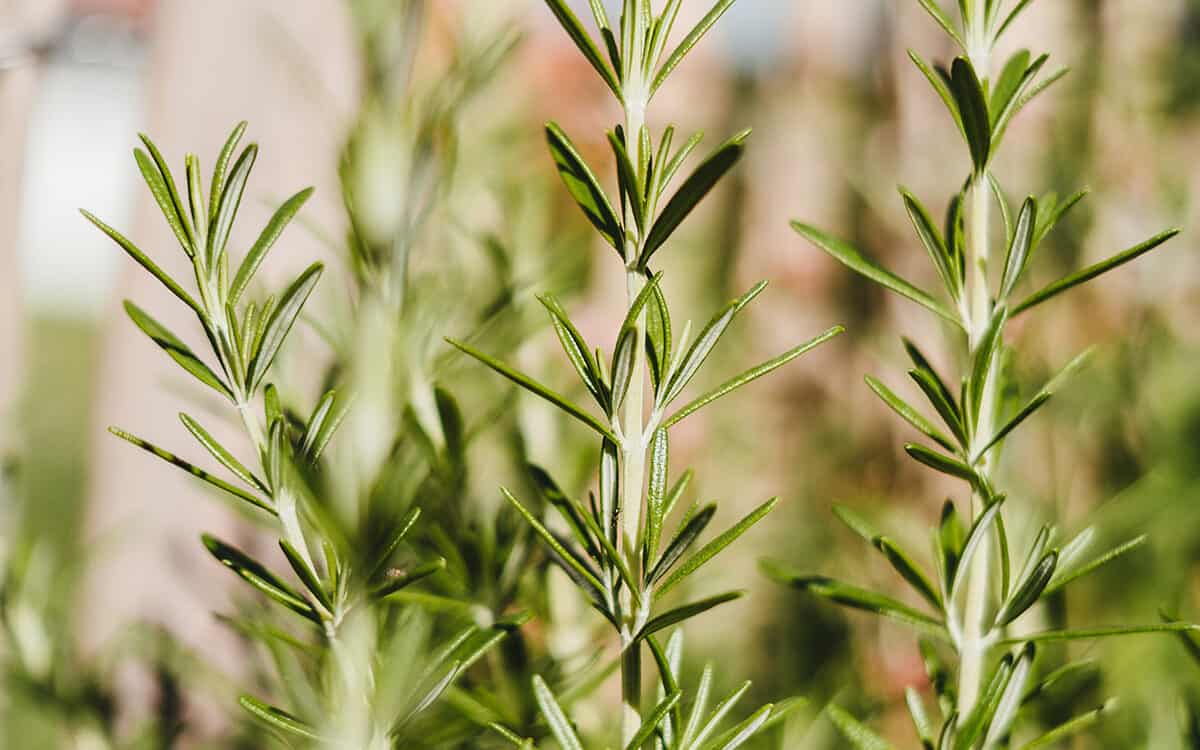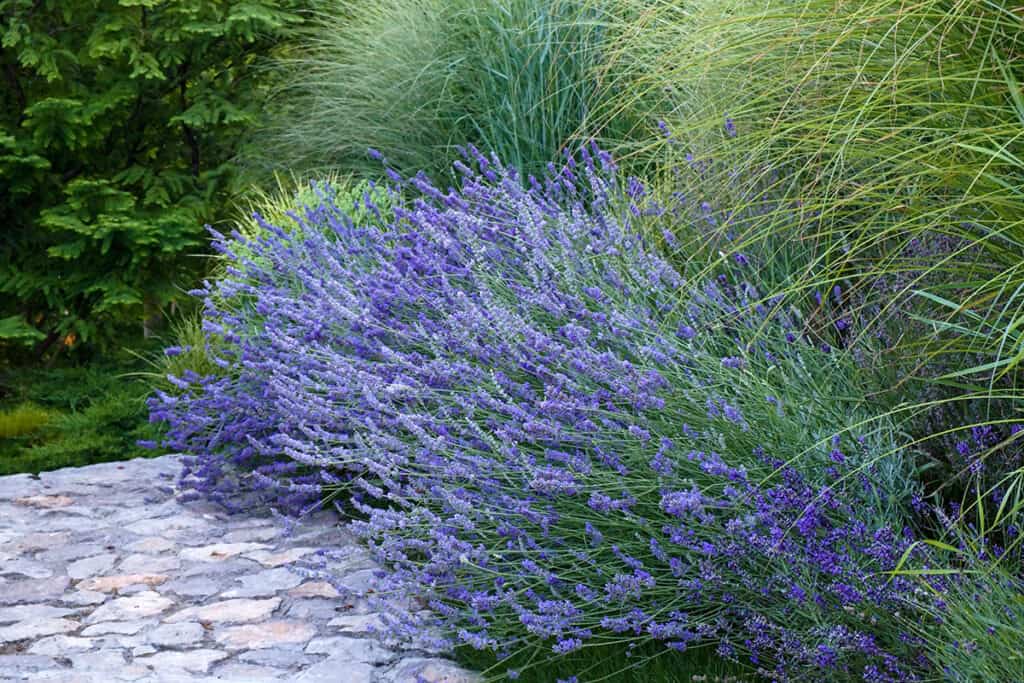Your Garden Can Be An Oasis, Even Without Rain
One thing’s for sure: you can’t control the weather. In hot years, when the rain is not a given, having a landscape plan that doesn’t rely on irrigation or natural rainfall can ensure a beautiful looking home, no matter what nature throws at you.
Some of our favorite plants can up the ante on natural beauty without requiring too much water, should drought conditions arise.

Catmint, for instance, which flourishes in low-water conditions and offers purple blooming flowers from summer through early fall, can grow to be three feet tall and wide. It’s also an active pollinating plant that can be useful for both planters and garden borders. Agastache is another favorite among bees, a vertical-growing plant that grows in purple and white and that thrives in dry climates and dry summers.
Salvia, which can range in colors from deep fuchsia to purple and blue, can rise to nearly three feet in height. Blooming in high summer and early fall, the plant grows great in containers and planters as well as in bordered beds.
With over 45 species — and over 450 varieties within these species — lavender is a diverse plant that offers not only beauty but also aroma. Native to the Mediterranean and Middle East, it can be used in herb gardens, as ground cover, and in cutting gardens. Certain species of the plant (though not all of them) are edible, and the fragrant, pretty, late-summer bloomer is resistant to long periods without rain.
Hen and chicks, the rosette-shaped succulents that grow easily on rocky paths, grow happily in areas with lots of sun and poor soil. Plant them on pathways or near full-sun stone walls for a laissez-faire approach to your beautiful garden. And, for a pop of color, consider Yarrow, a long-blooming perennial that blooms in pink, white, and yellow all summer long. Yarrow can be planted as ground cover, as edging, or even in a vegetable or herb-garden, and can also be used for an eco-friendly lawn alternative for those looking to move away from more traditional green grasses.

Aromatic rosemary, a perennial that loves full sun and well-drained soils, prefers dry conditions and can be used to add oomph in the kitchen, too. If you expect a particularly cold winter, cover it with burlap to protect it from the elements. (Potted plants can come indoors.)
And although Russian sage may smell like the culinary variety, it’s actually a decorative version; this blue-toned perennial can survive a lack of water (and even cold temperatures). Add creeping thyme to the mix, which produces tiny purple and white flowers and thrives in even shadier corners of the yard as ground cover, and you have your bases covered for the pillars of some of the more familiar savory garden scents.
And don’t forget: even if you do happen to have a rainy summer — this year, next year, or the year after that — planting your garden with drought-resistant plants is a great way to conserve water, an ecologically sound approach to making your home and garden the best and brightest it can be.








![Join us May 6th at The Harmonie Club for the Spring Salon Luncheon, a beautiful gathering in support of a truly meaningful cause. Together, we’ll raise critical funds and awareness for @campgoodgriefeeh—@eastendhospice’s summer bereavement camp helping children and teens navigate loss with compassion, connection, and healing. [link in bio]](https://hamptonsrealestateshowcase.com/wp-content/uploads/sb-instagram-feed-images/491527001_18506092897030135_3117653411609489602_nfull.webp)
![Welcome to this exquisite custom-built home in the prestigious Quogue South estate section, just moments from Dune Road and some of the world’s most breathtaking ocean beaches. Completed in 2024, this expansive shingle-style residence offers 6 beds, 7 full and 2 half baths, a separate legal guest cottage, heated gunite saltwater pool with spa, all set on a beautifully manicured 0.74± acre lot. Represented by @lauren.b.ehlers of @brownharrisstevens. [link in bio]](https://hamptonsrealestateshowcase.com/wp-content/uploads/sb-instagram-feed-images/491516869_18505931593030135_4655757731678000577_nfull.webp)
![Discover 11 Oyster Shores, a unique marriage of thoughtful design, uncompromised execution and meticulous craftsmanship expressed across nearly 6,000± sq. ft. of highly curated living space. Brought to life under the watchful eye of Blake Watkins, the visionary behind WDD, the project is a refreshing departure from the ordinary. Represented by @nobleblack1 of @douglaselliman. [link in bio]](https://hamptonsrealestateshowcase.com/wp-content/uploads/sb-instagram-feed-images/491440257_18505740808030135_9064730571228880657_nfull.webp)
![Reserve your ad space now in the Memorial Day “Summer Kick-Off” Issue of #HRES! 🍋 Be seen by high-end buyers and sellers across the Hamptons, Manhattan, and South Florida—just in time for the start of the season. Secure your spot today and make waves this summer 🌊☀️ [link in bio]](https://hamptonsrealestateshowcase.com/wp-content/uploads/sb-instagram-feed-images/491441694_18505573426030135_4475989184561040528_nfull.webp)

![Tuesday, April 15, was Tax Day for most, but for someone in Palm Beach, it was closing day! The nearly 8,00± sq. ft. Mediterranean-style residence at 240 N Ocean Boulevard, with direct ocean views and a private, 100-foot beach parcel, closed at exactly $26,670,750. The seller was represented by Jack Rooney of @douglaselliman and Elizabeth DeWoody of @compass while Dana Koch of @thecorcorangroup brought the buyer. [link in bio]](https://hamptonsrealestateshowcase.com/wp-content/uploads/sb-instagram-feed-images/491445351_18505056166030135_4907944420436119099_nfull.webp)
![Previously featured on our 2024 Columbus Day issue cover, 74 Meeting House Road has officially sold! This stunning new construction in Westhampton Beach offers the perfect blend of thoughtful design and timeless style. Congratulations to @kimberlycammarata of @douglaselliman who held the listing! [link in bio]](https://hamptonsrealestateshowcase.com/wp-content/uploads/sb-instagram-feed-images/491441951_18504901357030135_2664904795600183799_nfull.webp)
![Located South of the highway in Southampton this 4 bedroom, 5.5 bath multi-story property, offers extensive exterior architectural detail throughout. 60 Middle Pond Road offers breathtaking views and tranquil living, nestled along the serene shores of Middle Pond and Shinnecock bay. Represented by @terrythompsonrealtor @douglaselliman. [link in bio]](https://hamptonsrealestateshowcase.com/wp-content/uploads/sb-instagram-feed-images/491451873_18504686110030135_5284427082339135969_nfull.webp)
